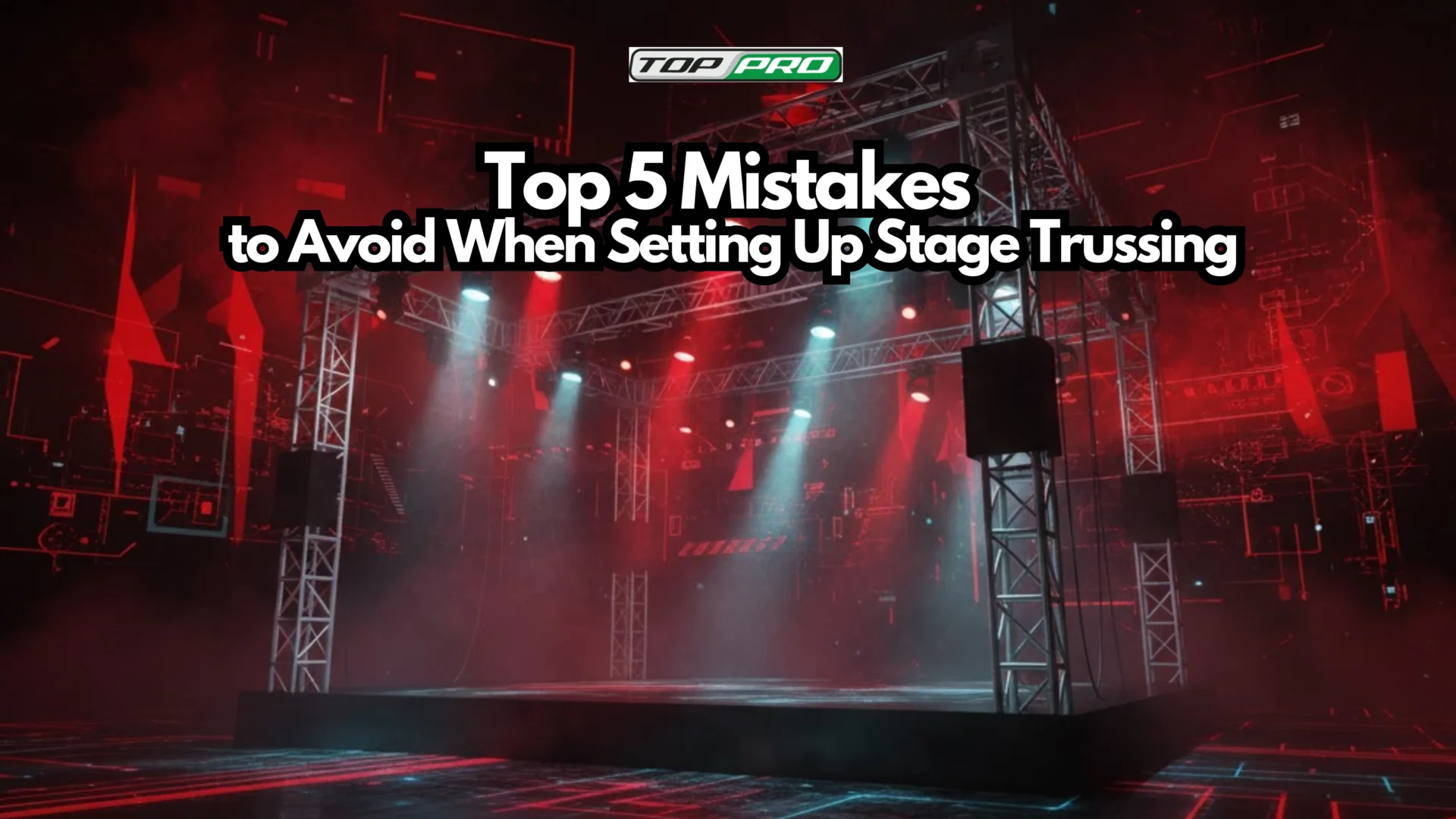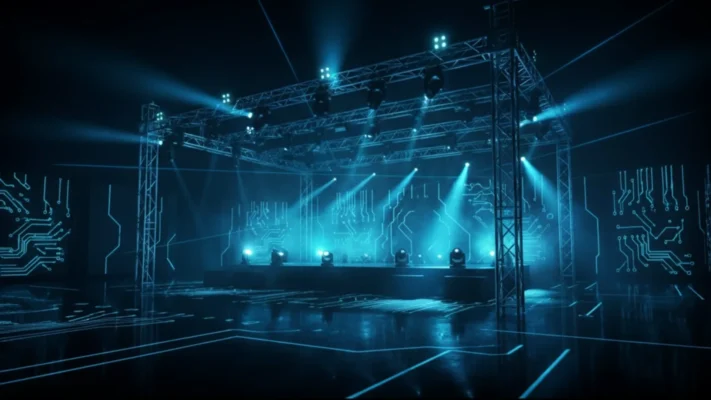Top 5 Mistakes to Avoid When Setting Up Stage Trussing

Stage trussing is the skeleton of your lighting and sound rig — the unseen structure that keeps your fixtures safe, your cabling neat, and your show looking professional. But while it’s easy to focus on flashy lights and gear, truss setup errors can lead to serious safety issues, downtime, or costly repairs.
Whether you’re building a small DJ totem or flying an LED wall above a festival stage, avoiding these five mistakes will keep your setup safe, efficient, and up to industry standards.
1. Ignoring Load Ratings and Engineering Limits
The Mistake: Overloading the truss with too many fixtures or underestimating the combined weight of lights, cables, and clamps.
Every piece of trussing — from a 2-meter stick to a full square grid — has a maximum distributed load and center-point load rating. Exceeding those limits risks structural failure.
What to Do Instead:
- Check the manufacturer’s spec sheet for load limits per span and orientation (horizontal vs. vertical).
- Account for everything: lighting fixtures, moving heads, clamps, safety cables, cables, and accessories.
- Factor in dynamic loads: If your rig includes moving fixtures or flown speakers, the truss experiences changing forces. Add a 25–50% safety margin.
Pro Tip: Never guess truss load capacity based on visual thickness. Two similar-looking aluminum trusses can have different load ratings depending on alloy and weld pattern.
2. Skipping Proper Support and Rigging Hardware
The Mistake: Using makeshift supports like stage boxes, ungraded bolts, or chains instead of rated rigging hardware.
Trussing depends on certified rigging gear — not just muscle and gravity. Improper suspension can lead to catastrophic collapse.
What to Do Instead:
- Use rated shackles, slings, and steel cables certified for entertainment rigging.
- Double-check the shackle pin orientation (pins should be horizontal, not vertical) and ensure they’re fully seated.
- If using a flying truss, use motor hoists with a verified capacity and test them before load-in.
- For ground-supported rigs, verify that base plates and uprights can handle the total load.
Heads-Up: Never use hardware store carabiners or chains — only load-rated equipment designed for stage use (with WLL and certification marks).
3. Neglecting Safety Cables and Secondary Attachments
The Mistake: Assuming your primary clamp or bracket is enough to hold your fixtures.
Accidents happen — clamps can slip, screws can loosen, or vibrations can knock fixtures out of alignment. Safety cables are your fail-safe.
What to Do Instead:
- Attach a safety cable to every overhead fixture, even lightweight LEDs.
- Anchor each cable to a fixed point on the truss, not to another fixture.
- Inspect regularly for frayed cables or damaged carabiners.
- Use cables rated for at least 5× the fixture’s weight.
Pro Tip: Keep a dedicated bin of safety cables in your truss kit. It’s the easiest way to enforce consistency on tour.
4. Overlooking Leveling, Alignment, and Ground Stability
The Mistake: Setting up truss towers or ground-supported grids on uneven surfaces or without checking the level.
Uneven terrain, soft flooring, or poorly spaced supports can cause the truss to twist, resulting in uneven weight distribution.
What to Do Instead:
- Use a laser level or bubble level when assembling the base sections.
- Add shims or adjustable feet to compensate for uneven ground.
- If outdoors, secure ballast or sandbags on base plates to prevent tipping.
- Always perform a final sight alignment check from multiple angles before flying fixtures.
Example: A single 1° tilt on a 20-foot truss span can shift dozens of pounds of force toward one end. Always measure and correct before lifting.
5. Poor Cable Management and Power Planning
The Mistake: Running cables loosely or letting them hang from fixtures without strain relief.
Messy cabling doesn’t just look unprofessional — it can pull fixtures off-axis, interfere with motion, or introduce electrical hazards.
What to Do Instead:
- Plan your power and DMX paths before you start hanging fixtures.
- Use Velcro ties or cable clips every few feet for tidy runs.
- Leave enough service loop at moving fixtures to allow full pan/tilt motion.
- Keep power and signal lines separated to reduce interference.
- Bundle cables toward the truss chord nearest your power source or snake entry.
Pro Tip: Label both ends of every cable. During a strike, this saves hours and prevents damaged connectors.
Bonus: Forgetting Pre-Show Inspection and Certification
Even a perfectly built truss needs a sign-off. Local regulations often require inspection or certification for flown structures.
Checklist Before Showtime:
- Bolts and pins secured and safety-clipped.
- Motors, cables, and shackles are inspected for wear.
- Fixtures are safely cabled with secondary attachments.
- Truss level and structurally supported.
- Load documentation available onsite.
Heads-Up: Many venues or insurance carriers require a professional rigger to inspect flown trusses before the audience enters.
Final Thoughts
Stage trussing isn’t just a metal frame — it’s a precision-engineered support system for your creative vision. Treat it with the same care you give your lighting design.
By respecting load limits, using rated rigging gear, securing safety attachments, and managing cables cleanly, you’ll not only meet safety standards but also make setup and teardown smoother for every show.
Ready to build a safe, efficient truss rig? Explore certified trussing systems and rigging accessories or consult a stage-structure specialist to design a load-tested layout for your next event.








